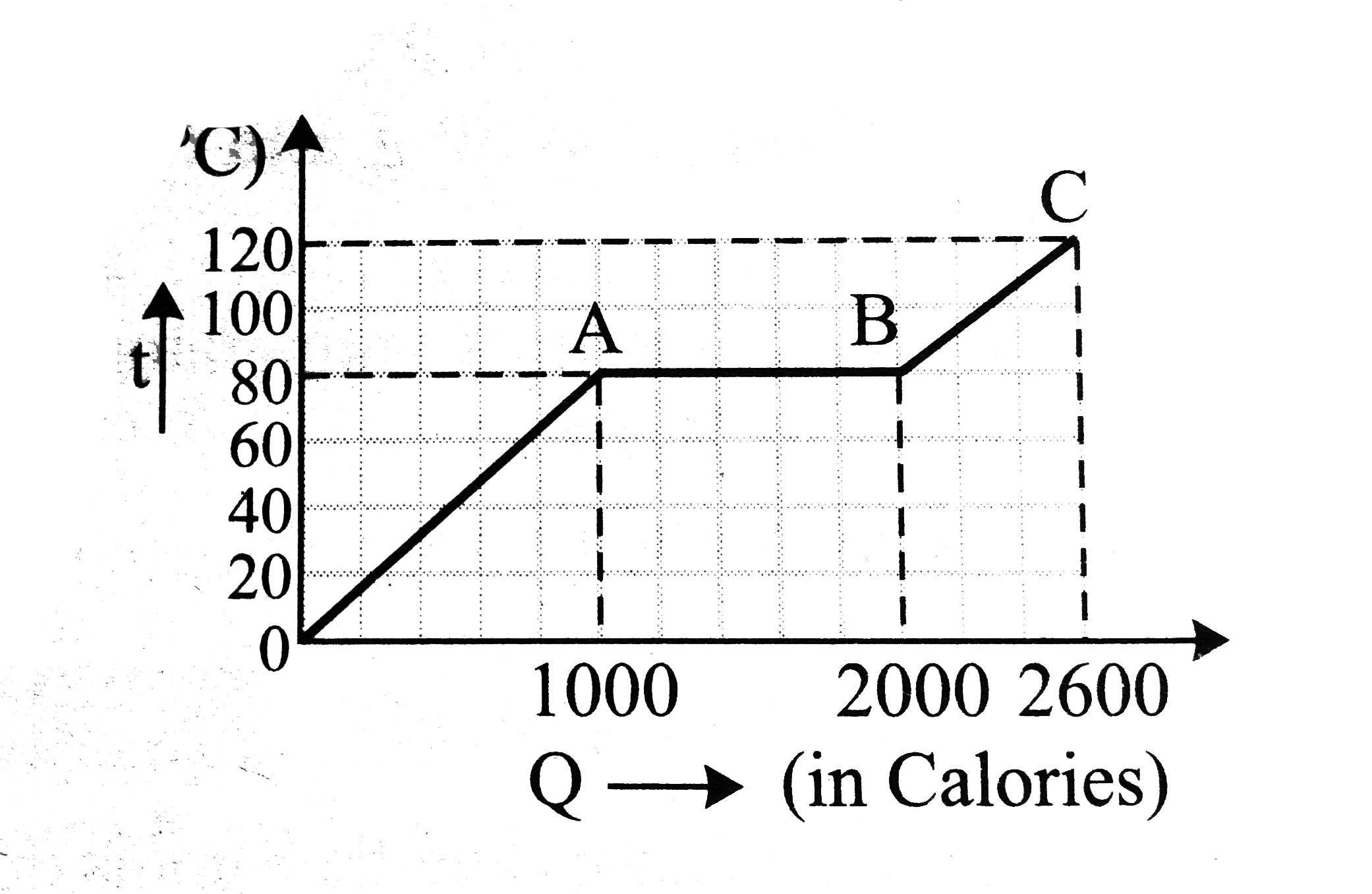The specific heat capacity of a substance A is 3,800Jkg−1K−1 and that of a substance B is 400Jkg−1K−1. Which of the two substances is a good conductor of heat ? Give a reason for your answer.
To determine which of the two substances, A or B, is a good conductor of heat based on their specific heat capacities, we can follow these steps:
Step 1: Understand Specific Heat Capacity
Specific heat capacity is defined as the amount of heat required to raise the temperature of a unit mass of a substance by 1 Kelvin (or 1 degree Celsius).
Step 2: Compare Specific Heat Capacities
Given:
- Specific heat capacity of substance A = 3800 J/kg·K
- Specific heat capacity of substance B = 400 J/kg·K
Step 3: Analyze the Values
From the values provided, we observe:
- Substance A requires 3800 Joules of heat to raise its temperature by 1 K.
- Substance B requires only 400 Joules of heat to achieve the same temperature change.
Step 4: Conclusion on Heat Conductivity
Since substance B requires significantly less heat to change its temperature, it indicates that it can absorb and transfer heat more efficiently. Therefore, we conclude that:
Substance B is a good conductor of heat, while substance A is not as good a conductor of heat.
Step 5: Reasoning
The reason behind this conclusion is that materials with lower specific heat capacities can change their temperature more easily with the addition of heat, which is a characteristic of good conductors of heat.
Specific heat capacity is defined as the amount of heat required to raise the temperature of a unit mass of a substance by 1 Kelvin (or 1 degree Celsius).
Given:
- Specific heat capacity of substance A = 3800 J/kg·K
- Specific heat capacity of substance B = 400 J/kg·K
From the values provided, we observe:
- Substance A requires 3800 Joules of heat to raise its temperature by 1 K.
- Substance B requires only 400 Joules of heat to achieve the same temperature change.
Since substance B requires significantly less heat to change its temperature, it indicates that it can absorb and transfer heat more efficiently. Therefore, we conclude that:
The reason behind this conclusion is that materials with lower specific heat capacities can change their temperature more easily with the addition of heat, which is a characteristic of good conductors of heat.
Topper's Solved these Questions
Similar Questions
Specific heat capacity of substance A is 3.8Jg−1K−1 whereas the specific heat capacity of substance B is 0.4Jg−1K−1.
How is one led to the above conclusion ?View SolutionSpecific heat capacity of substance A is 3.8 J/gK, whereas the specific heat capacity of substance B is 0.4 J/gK
Which of the two is good conductor of heat ?View SolutionSpecific heat capacity of substance A is 3.8Jg−1K−1 whereas the specific heat capacity of substance B is 0.4Jg−1K−1.
If substances A and B are liquids then which one would be more useful in car radiators ?View SolutionA substance initially in solid state at 0∘C is heated. The graph showing the variation in temperature with the amount of heat supplied is shown in Fig. 11.7. If the specific heat capacity of the solid substance is 500 J kg−1^∘C−1, use graph to find : (i) the mass of the substance, and (ii) the specific latent heat of fusion of the substance in the liquid state.
View Solutiont1/2 is the half of a substance then t3/4 is the time in which substance
View SolutionA solid aluminium sphere and a solid copper sphere of twice the radius are heated to the same temperature and are allowed to cool under identical surrounding temperatures. Assume that the emisssivity of both the spheres is the same. Find ratio of (a) the rate of heat loss from the aluminium sphere to the rate of heat loss from the copper sphere and (b) the rate of fall of temperature of the aluminium sphere to the rate of fall of temperature of copper sphere. The specific heat capacity of aluminium =900Jkg−1C−1 . and that of copper =390Jkg−1C−1 . The density of copper =3.4 times the density of aluminium.
View SolutionThe specific heat capacity of hydrogen at constant'pressure and constant volume are 14280Jkg−1K−1and10110Jkg−1K−1 respectively. Calculate the value of the universal gas constant.
View SolutionCalculate the heat required to convert 3 kg of ice at −12∘C kept in a calorimeter to steam at 100∘C at atmospheric pressure. Given,
specific heat capacity of ice = 2100Jkg−1K−1
specific heat capicity of water = 4186Jkg−1K−1
Latent heat of fusion of ice = 3.35×105Jkg−1
and latent heat of steam = 2.256×106Jkg−1 .View SolutionDecay constant of a radioactive substance is 69.3sec−1, find t1/16 of the same substance.
View Solution
A substance is in the solid form at 0∘C. The amount of heat added to this substance and its temperature are plotted in the following graph. If the relative specific heat capacity of the solid substance is 0.5, find from the graph (i) the mass of the substance, (ii) the specific latent heat of the melting process and (ii) the specific heat of the substance in the liquid state.
Specific heat capacity of water =1000cal/kg/KView Solution

